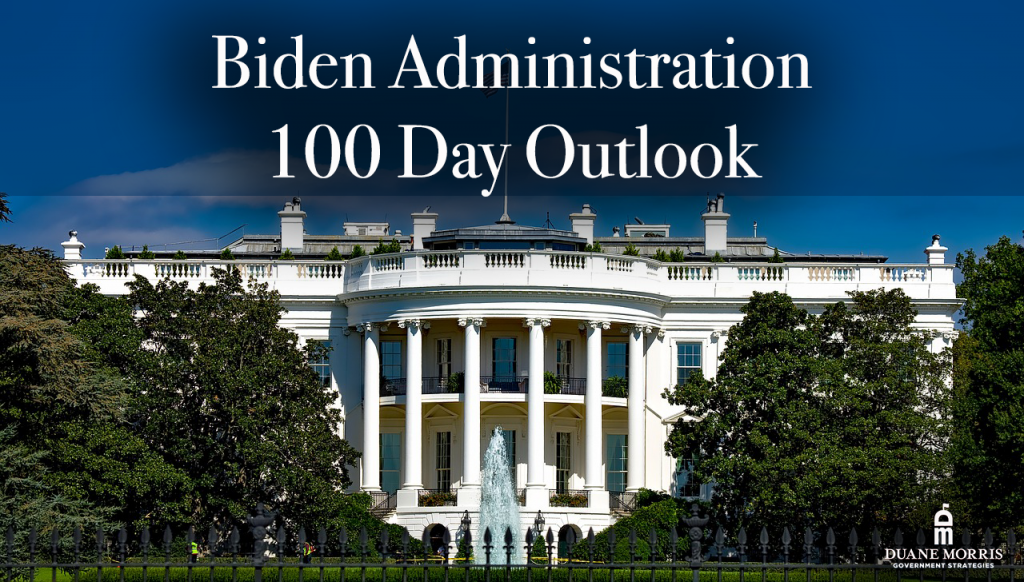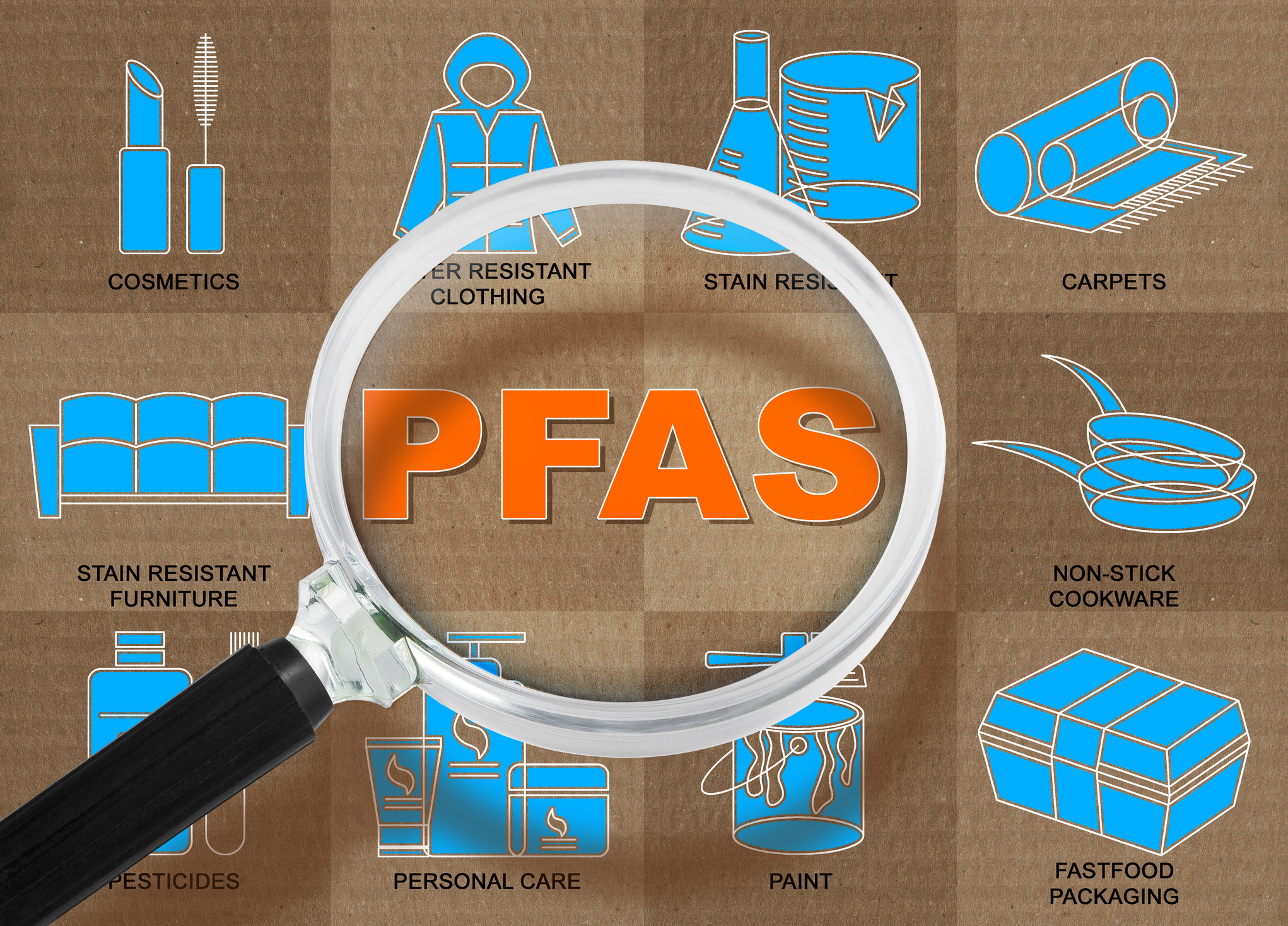
DMGS Article Highlights
- President Biden’s first 100 days began with an early blitz of executive action.
- Biden’s four overlapping and compounding crises he is focusing on are the Covid-19 pandemic, the resulting economic downturn, climate change, and racial equity.
President Joe Biden has executed an early blitz of executive action to reverse some of Donald Trump’s most controversial policies and address the coronavirus pandemic. Biden’s first 100 days, including his recent executive actions, address what the administration points to as four overlapping and compounding crises: the Covid-19 pandemic, the resulting economic downturn, climate change, and racial equity.
Biden began with about a dozen executive actions on Inauguration Day. First-day directives focused on measures to mitigate the Covid-19 pandemic and its economic fallout, including an extension of student loan forbearance past January 31 and an extension of a moratorium on evictions and foreclosures. Biden also launched a “100 Day Masking Challenge,” imposing new mandates requiring masks on federal property and interstate transportation.
The Biden administration’s plan has also included presidential directives on safely reopening schools and businesses and Covid-related economic relief measures on January 21. and January 22.
Biden has also taken additional action on “Buy American” provisions in federal purchasing and on criminal justice, climate, science, and health care matters. Biden has also taken steps to overturn Trump’s border enforcement policies and set up a process to reunite children that the Trump administration separated.
The executive actions have taken the form of executive orders (EOs), presidential memoranda, and directives to Cabinet agencies.
Biden’s agenda will require “robust congressional action.” Biden has proposed one significant piece of legislation: an immigration measure to create a path to citizenship for immigrants brought to the U.S. as children.
Other top legislative priorities in Biden’s first 100 days include a Covid and economic recovery package, voting rights, the minimum wage, and violence against women.
Among the most notable COVID-19 actions taken by the Biden administration are:
Executive Order on a Sustainable Public Health Supply Chain
Biden has invoked the Defense Production Act to compel private companies to make materials needed to battle Covid-19. The administration has identified 12 areas where shortfalls range from N95 masks to sample testing swabs to syringes.
Executive Order on Ensuring a Data-Driven Response to COVID-19 and Future High-Consequence Public Health Threats
This EO requires various federal agencies to designate senior officials to work on COVID-19 and pandemic data issues. It also requires improvements to the transparency of public health data and advances in data analytics.
Executive Order on Ensuring an Equitable Pandemic Response and Recovery
This EO establishes a federal COVID-19 Health Equity Task Force and directs federal agencies to improve data collection and reporting for high-risk populations.
Executive Order on Establishing the COVID-19 Pandemic Testing Board and Ensuring a Sustainable Public Health Workforce for COVID-19 and Other Biological Threats
This EO establishes a federal COVID-19 Pandemic Testing Board for a unified approach to testing and double-testing supplies. The EO directs federal agencies to develop a comprehensive testing strategy for reopening schools. Along with DOD, each agency will designate a senior official to work on COVID-19 and pandemic-related data issues.
Executive Order on Improving and Expanding Access to Care and Treatments for COVID-19
This EO requires greater planning collaboration between NIH and HHS in supporting healthcare system capacity for COVID-19. HHS and the VA will also be required to improve therapeutic and clinical care distribution.
Executive Order on Promoting COVID-19 Safety in Domestic and International Travel
In an EO issued Thursday, President Joe Biden required masks to be worn in airports, planes, intercity buses, and other transportation forms. The president is also ordering people who arrive in the U.S. from other countries to self-quarantine, which had previously been unenforced guidance. Biden also codified an action by former President Donald Trump on January 12 to require a negative Covid-19 test before flying to the U.S. from other nations. The masking requirement takes effect “immediately,” or as soon as agencies can enact it. It also directs Homeland Security’s secretary to “promptly” develop a plan for a self-quarantine requirement. While the EO allows the government to craft exemptions for travelers arriving from countries that cannot conduct Covid-19 testing, other measures—such as additional quarantines—may be allowed to substitute for tests. Federal agencies must determine within 14 days the type of testing required for visitors to the U.S. and how travelers should document their tests. Agencies, including the Homeland Security Department, are directed to study whether measures should also be imposed on those traveling into the U.S. on the ground via Mexico and Canada.
Executive Order on Protecting Worker Health and Safety
The Biden administration has ordered OSHA to determine whether there is a need for temporary emergency standards protecting workers from on-the-job Covid-19 infections. The National COVID-19 Response and Pandemic Preparedness Strategy calls for OSHA to issue updated COVID-19 guidance worker protections. It also directs OSHA and the Mine Safety and Health Administration to consider whether temporary emergency standards are necessary. If OSHA decides an emergency rule is needed, the regulation should be issued by March 15. The EO also calls for OSHA to review and improve its Covid-19 enforcement efforts by early February. The EO instructs other federal agencies that have some workplace safety role—the Departments of Agriculture, HHS, Transportation, and Energy—to look at how they can protect workers under their jurisdictions.
Executive Order on Supporting the Reopening and Continuing Operation of Schools and Early Childhood Education Providers
President Joe Biden signed an EO directing federal agencies to get schools resources for Covid-19 testing, contact tracing, and vaccination for teachers. The EO also requires the Departments of Education and Health and Human Services to provide new guidance on steps schools and colleges on whether and how they can reopen safely. The EO encourages the FCC to use funding for broadband connections to support remote learning in students’ homes. The EO also calls for Education and HHS to collect data on how the Covid-19 pandemic has affected students and schools. It also calls for creating a clearinghouse for schools to share information on operating safely.
Memorandum to Extend Federal Support to Governors’ Use of the National Guard to Respond to COVID-19 and to Increase Reimbursement and Other Assistance Provided to States
A memorandum addressed to the Departments of Defense and Homeland Security departments directs the Federal Emergency Management Agency to provide reimbursement to states and schools for the cost of supplies such as personal protective equipment in schools. Biden’s EOs will also boost reimbursement through FEMA for states that have deployed the National Guard to respond to the pandemic. The National Guard has helped at Covid-19 testing sites, assisted at over-run medical centers and prisons, and distributed masks and gloves. Most recently, guard members helped states set up vaccination sites and provided logistical support, including directing traffic. As of January 14, National Guard members in 16 states and territories have helped administer vaccines.
Latest News
Photo credit: iStock.com/Motortion In 2022, the U.S. Supreme Court decision in Dobbs v. Jackson Women's Health Organization overruled a federal constitutional guarantee of freedom to abortion. Since then, legislation concerning reproductive healthcare—including access to [...]
Photo credit: iStock.com/runna10 Every year in the United States, a growing number of teachers leave their positions. While there are multiple reasons for this alarming trend, many teachers point to inadequate compensation as a significant [...]
Photo credit: iStock.com/Francesco Scatena Recent trends across the country have seen several states introducing bills to ban certain chemicals, particularly perfluoroalkyl and polyfluoroalkyl substances (PFAS), in consumer products. According to the EPA, PFAS are persistent [...]
Photo credit: iStock.com/naturalbox The debate over raw milk legislation has intensified in 2024, with several states introducing or passing bills that address the sale and distribution of unpasteurized dairy products. Raw milk has not undergone [...]






Stay In Touch